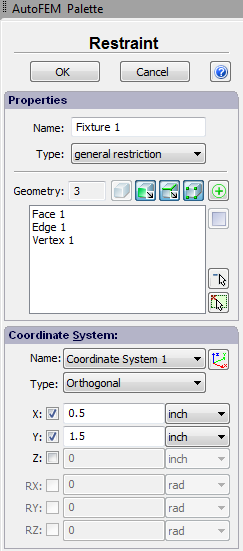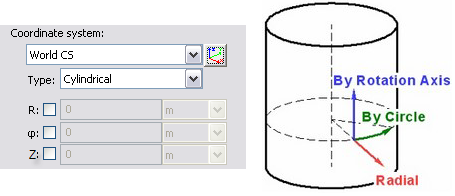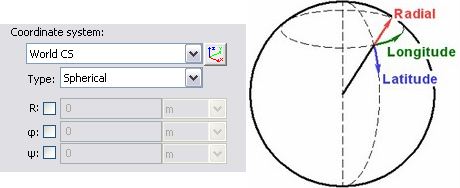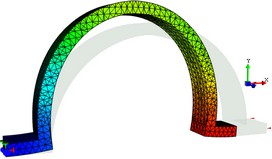 |
AutoFEM Analysis Fixture | ||||||
To specify a full restraint, use one of the following methods:
Command Line: |
FEMAFIX |
Main Menu: |
AutoFEM | Loads/Restraints | Fixture |
Icon: |
|
This type of boundary conditions locks all degrees of freedom for the selected object. A full restraint can be applied to a face, edge or vertex of the model.
To specify a restraint, you need to select a model element. Faces, edges and vertices are available for selection. Upon selecting an element, the symbolic notation of the full restraint appears in the 3D window.

To specify a partial restraint, you need to set the parameter "Type" with the value "general restriction" in the properties window of the restraint.
When defining a partial restraint, the user is offered to manually specify restraints on different degrees of freedom. When using only partial restraints, you need to ensure the sufficient number of restraints for fixing the model.
To specify locations of a partial restraint, select an edge, face or vertex. Next, you need to define restraints by degrees of freedom. The user can work in one of the three types of coordinate systems – Orthogonal, Cylindrical or Spherical. A local coordinate system is used for binding the coordinate system in question to the model. It is worth noting that in the case when the user did not define the local coordinate system, the partial constraints will be defined with respect to the global coordinate system.
Each coordinate system allows to restrain displacements in three degrees of freedom. An activated box item of the respective degree of freedom in the selected coordinate system means that displacements are fully constrained in this direction (if the value is equal 0), or that a known displacement is specified (if the value in the respective text field is not zero). A cleared flag means no restraint is applied in this degree of freedom. By default, all displacements in all three directions are not blocked. If necessary, the user can lift up existing restraints or add new ones.

The cylindrical coordinate system allows to constrain displacements:
•in the radial direction (R);
•along the circle (Phi);
•along the rotation axis (Z).

The spherical coordinate system allows to constrain displacements:
•in the radial direction (R);
•along the longitude (Phi);
•along the latitude (Psi).

The Fixture command also provides another useful functionality. The user can specify known displacements for the structure, such as a known in advance strain in the structure. For this, specify the value of fixed displacement of a model element along some of the coordinate axes in the " Fixture " command's properties window. Static analisys will be performed with this condition.

Note that a static solution is possible in this case without applying additional (force) loads. In this way, one can evaluate the stress developing in a strained structure when the quantitative values of the strain (displacements) are known.
A typical order of steps for defining restraints is as follows:
1.Initiate the " Fixture " command ![]() .
.
2.Set the parameter "Type" with the value "General" or "Fixed".
3.Select element to fix.
4.Select LCS (for "general" type of restraints).
5.Mark the necessary limits for displacements by the axes and define their values (for "general" type of restraints).
6.Complete the command.
See also: User Coordinate System, Contact, Plane of Symmetry, Elastic Base